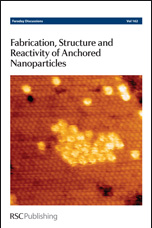Bimetallic nanoparticles (∼11 nm diameter) of CuNi and CuCo were prepared by a new synthetic route and the 1 : 1 atomic ratio of their constituent elements confirmed using STEM-EDS at a single particle level. These nanoparticles, supported on the native oxide layer of a silicon wafer, were studied in situ in a series of reactive gas atmospheres (H2 → CO or CO/H2 → O2 → H2) using ambient pressure X-ray photoelectron spectroscopy (AP-XPS). Despite the deliberate similarity of nickel and cobalt with respect to copper, their restructuring behaviour is different. CuNi nanoparticles were found to surface segregate nickel in H2, but copper in O2 reversibly, while CuCo nanoparticles were found to surface segregate copper irreversibly when exposed to O2, such that the surface remains copper rich when re-exposed to H2. Both systems also restructure in opposition to the behaviour predicted by the surface free energies and enthalpies of oxide formation of the elements from which they are comprised – factors that are seen to control restructuring and surface segregation in many similar systems.
You have access to this article
 Please wait while we load your content...
Something went wrong. Try again?
Please wait while we load your content...
Something went wrong. Try again?

 Please wait while we load your content...
Please wait while we load your content...